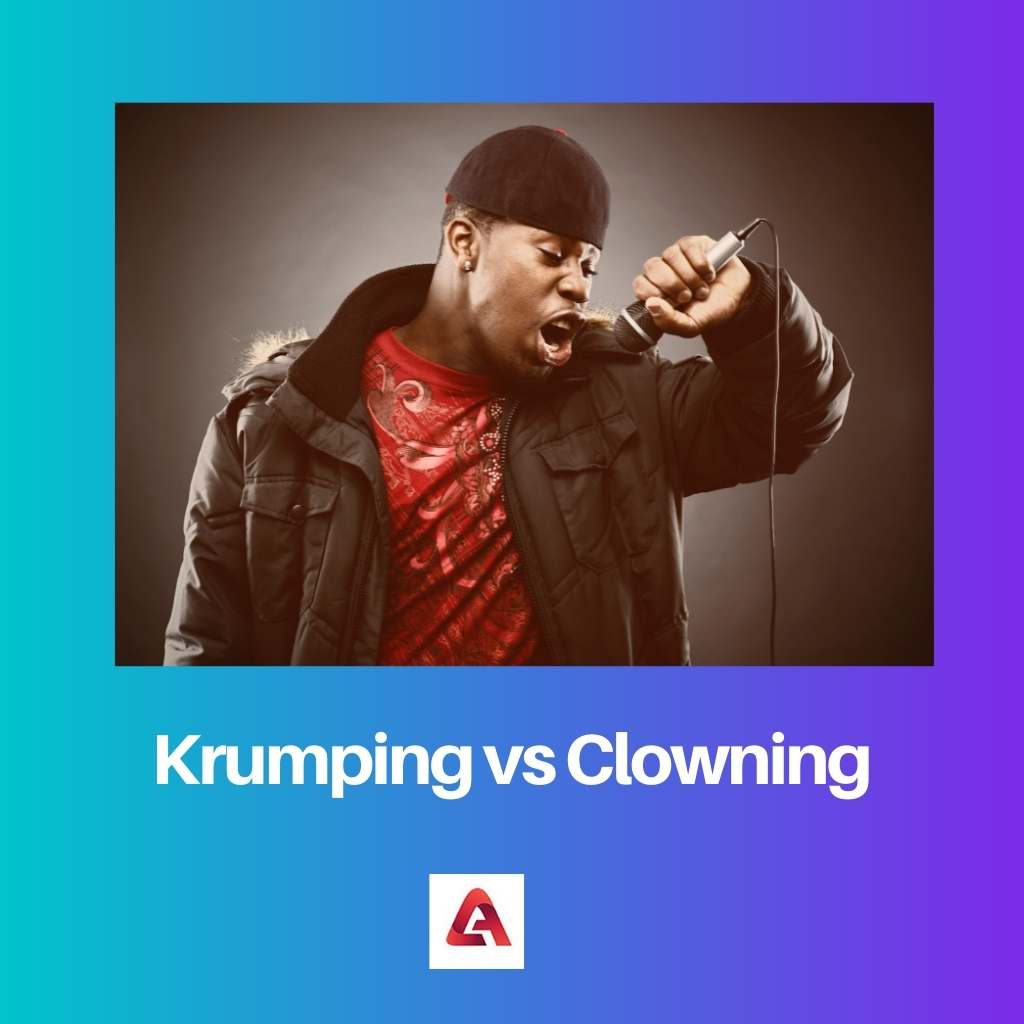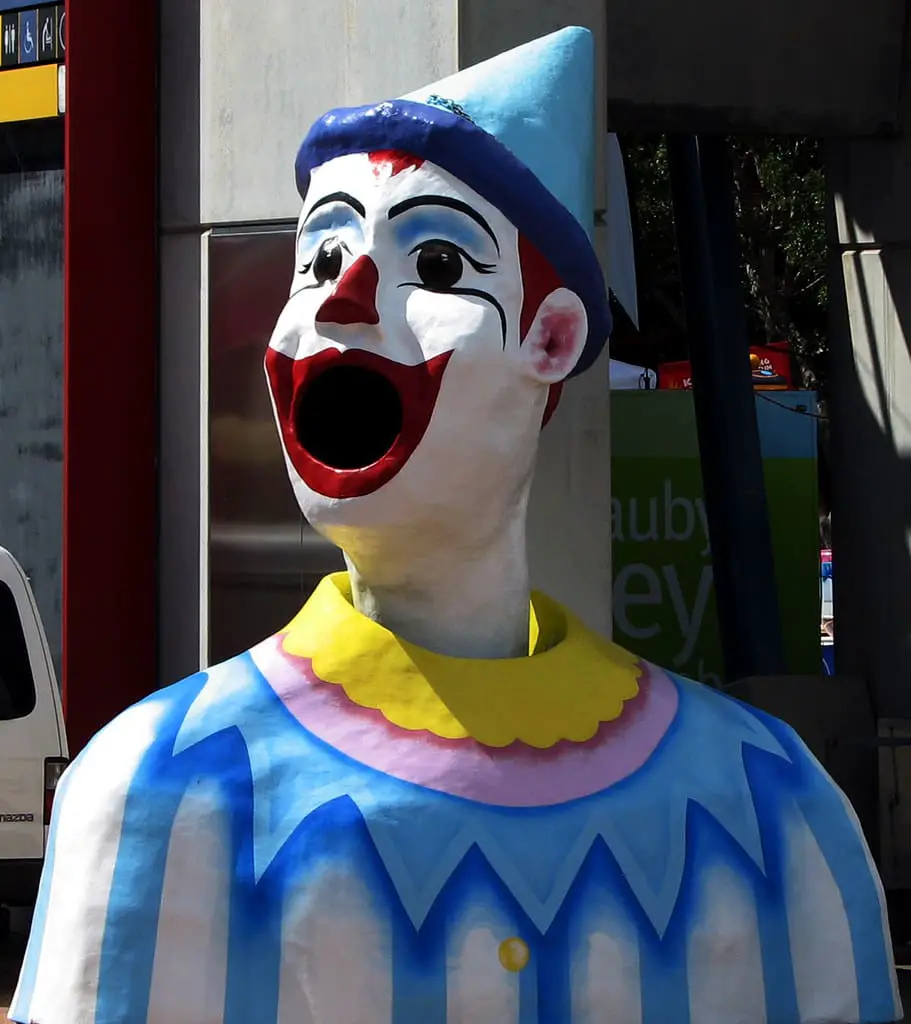Krumping is a typical form of Afro-diasporic street dancing. It has been popularized in the United States. It is basically characterized by free, expressive, exaggerated, and extremely energetic movement. Beginning krumpers regarded the dance as a method to get away from gang life and “to express deep emotions in a strong yet non-violent way.
This clown dancing form, sometimes known as “flexing,” originated in Brooklyn, New York. Bone breaking’s movement language blends rhythmic contortionist movement with tutting, waving, and gliding and is easily recognized by its shirtless performers and hideous visual style.
Key Takeaways
- Krumping is a high-energy, aggressive dance style characterized by fast, sharp movements, whereas clowning is a more theatrical, lighthearted dance style that incorporates humor and entertainment.
- Krumping originated as a response to clowning, developing as a more intense, emotionally charged alternative.
- Both dance styles are rooted in the African-American community in Los Angeles and gained popularity in the early 2000s.
Krumping vs Clowning
Krumping is a street dance popularized in the United States, characterized by free, expressive, exaggerated, and highly energetic movement. Clowning, which gave birth to krumping, is a similar form of street dance, but is characterized by more playful and comical movements, performed in mime-like makeup and attire.

Stomps, punches, chest pops, and arm swings are the four fundamental motions of Krumping. Krumping is nearly totally freestyle (improvisational), and it is most commonly performed in contests or sessions rather than on a stage. The krumping dance has aggressive motions and a hint of enraged fury. The dancing style, on the other hand, has no sexual references.
Tommy the Clown, a.k.a. Thomas Johnson, has been working with inner-city youngsters for over 28 years. Johnson is most known for inventing the “Clowning” dancing form, which evolved into Krumping in 1992 to supplement his hip-hop clown birthday party shows. It blossomed into a movement, gaining accolades and performing opportunities locally and nationally. Clowning allows you to move your hips around.
Comparison Table
| Parameters of Comparison | Krumping | Clowning |
|---|---|---|
| Creator | This form of dance technique has been created by dancer, innovator, and choreographer Cesare LaRon Willis a.k.a Tight Eyez. | Clowning has been invented by dancer Thomas Johnson over 28 years ago. |
| Origin | Krumping is a form of fury dance that is recognized for its violent connotations without involving sexual reference. | This is a physically smoother kind of dancing. It combines C-walking with clowning. |
| Style | Krumping is a form of fury dance that is recognized for its violent connotations without involving sexual reference. | This is a physically smoother kind of dancing. It combines C-walking with clowning. |
| Makeup | In krumping, there is no application of paints on the face. | Clowning involves using paints on the face to present a funny, lighter look like that of a clown. |
| Approach | Krump dancers have a more warrior-like style. | Because it’s called clown dancing, they act like clowns, therefore they have a more upbeat approach. |
What is Krumping?
Stomps, punches, chest pops, and arm swings are the four fundamental motions of Krumping. Krumping is nearly totally freestyle (improvisational), and it is most commonly performed in contests or sessions rather than on a stage. Krump differs from other hip-hop dance techniques, such as breakdancing and turning, in terms of style.
Krumping is an extremely violent dance that is performed upright to energetic and fast-paced music, but it does not advocate hostility or fighting; instead, the actions are designed to take up space and push other dancers to feed off and reciprocate the energizing energy.
When juvenile Clowns grew older, they began to wander away from Tommy the Clown’s beliefs. They desired something fresh and unique, something unique to them. They wanted to express themselves and thought they needed something other than the increasingly popular “commercial hip-hop.”
The dance, according to many Clowns and Krumpers, is what keeps them alive. Dance is a form of expression for them. Kids will join a dancing group rather than join a gang. Krumping is sometimes misunderstood as an aggressive activity. They aren’t fighting, according to a Krumper, and fighting is the last thing on their minds. You may either be pushed into your dance, or you can be pushed out of your dance.

What is Clowning?
Tommy the Clown began clowning in 1992 to provide entertainment at birthday celebrations. He was a clown who danced to hip-hop music. Kids of all ages were dropping, popping, and rolling about with it. Tommy is a ghetto superstar who has aided his neighborhood by serving as a mentor and father figure to many young dancers.
Clowning is dressing up like a jester and performing dancing movements with the help of one’s sentiments and emotions. Dance fights are a common feature of Clowning. Tommy, the Clown, provides school-based programs for children, community events, and birthday party entertainment. His objective is to keep youngsters out of gangs, violence, and drugs so that they can concentrate more on education. He’s presently attempting to reopen the Tommy the Clown Academy in Los Angeles and other locations.
The clowning movement grew in popularity, and there are now more than 50 clowning organizations in the United States. House of Clowns, Cartoon Clowns, World Wide, No Comparison, Titanium, and Race Track are just a handful of the titles available. Clowns act in performances and amuse at gatherings. In a world where there is a lot of negativity, these clown organizations believe they are doing something constructive.

Main Differences Between Krumping and Clowning
- Krumping is a sort of clown dance that has developed through the years. Clowning, on the other hand, is the original style of dance that was designed primarily for the sake of amusement.
- Krumping is a type of anger dance that is known for its violent overtones but does not include sexual references. On the other hand, Clowning blends C-walking and clowning to create a physically smoother kind of dance.
- Cesare LaRon Willis, a.k.a. Tight Eyez, a dancer, inventor, and choreographer, established this krumping style of dance method. Clowning was created over 28 years ago by dancer Thomas Johnson to amplify the hilarious performances and dances done at birthday parties.
- Paints are not applied to the face in Krumping, whereas, Clowning entails the application of paints on the face to create a humorous, lighter appearance similar to that of a clown.
- Krump dancers have a more warrior-like style than other types of dancers. Clown dancers behave like clowns because it’s called clown dance, so they take a more joyful approach.




